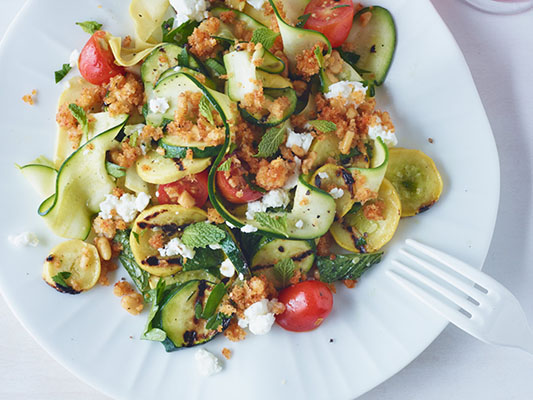Vegetables are low in fat and calories, and have zero cholesterol. Eating a vegetable-rich diet – like following the DASH Nutrition Plan – can help reduce the risk of heart disease, promote bone health, and keep you energized.
Here are some easy ways to incorporate vegetables into your diet:
Add greens to a smoothie
Smoothies are a delicious and simple option for breakfast or a snack. They’re made with whatever fruits and vegetables are readily available, and the nutritional value can be easily amped up the by adding some leafy greens to the mix, such as kale or spinach. Spinach is rich in potassium, helps maintain healthy blood pressure, and the simple addition to a smoothie makes for an easy way to incorporate leafy greens into your diet…even if you don’t like them.
Add vegetables to spaghetti
Vegetable noodles are a popular food trend today as some people like to use different squash veggies as a substitute for spaghetti because they provide a similar shape and texture. However, there is no need to completely replace spaghetti or even spend extra time making vegetable noodles! Simply add a handful of chopped veggies to spaghetti (whole grain is best) for a healthier alternative. As an added bonus, you will feel satisfied for longer. Pro-tip: Use a strong sauce, either a red tomato sauce or a flavorful green pesto, to enhance (or mask) the vegetable flavor depending on preference. Just keep an eye on nutrition labels as seasonings can add unnecessary calories, saturated fat, and sodium – culprits for obesity, high blood pressure, and cardiovascular diseases.
Make a vegetable-full chili—or try making a vegetarian chili
Chili is an excellent option to sneak in vegetables since it is mostly a melding of different flavors. Adding some green beans, zucchini, carrots and/or bell peppers will enhance the chili’s taste as well as adding some vegetables to your diet without even realizing it. You also have the option to make a full vegetarian chili by replacing meat with beans, which are an excellent source of plant protein and provide key nutrients such as folate, fiber iron, and zinc. The fiber and folate will reduce blood cholesterol levels, form red blood cells, and help prevent the risk of heart disease, making this a deliciously beneficial meal option. Guests will barely notice the difference since the overall taste and sauce is the same!
Soup
Growing up, soup was the first way I incorporated vegetables into my diet. Since soups are mostly liquids and purees, it’s easy to mask the fact that there are sometimes tons of vegetables included. For a delicious, healthy pureed soup, try broccoli soup. It’s an easy dish loaded with vitamin K and vitamin C.
Overall, even the pickiest of eaters – whether they are children or adults – can incorporate vegetables into their diet. Some ways are sneakier than others, but all of these tricks are sure to delight all types of eaters, and ensure they are eating a healthy diet.
Source: https://www.choosemyplate.gov/vegetables-nutrients-health

